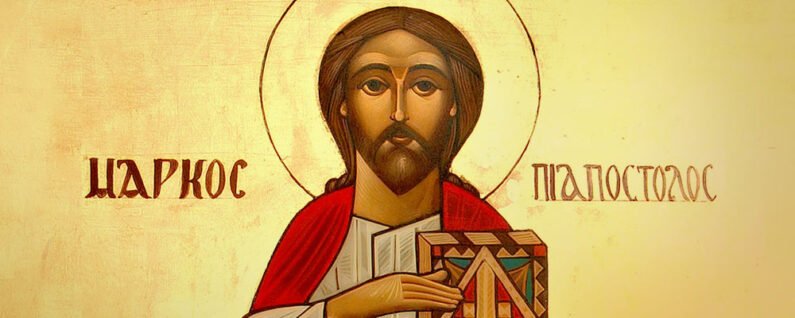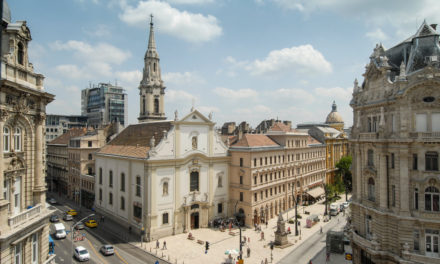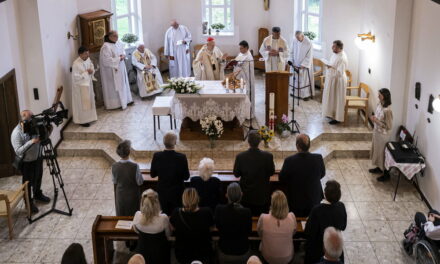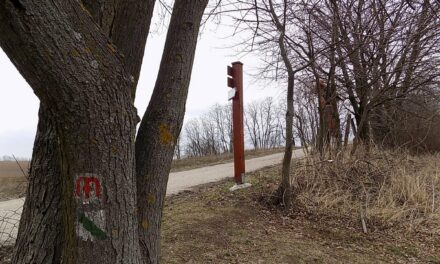We remember Saint Mark the Evangelist on his feast day, April 25.
We know about Mark's life from the Acts of the Apostles and from the first letter of Saint Peter. Peter "went to the house of Mary, the mother of John called Mark, where many were together and praying." There are scholars who consider it likely that the last supper took place in the same house, and that the apostles prepared for the feast of Pentecost here. The Garden of Gethsemane may also have belonged to Márk's mother, so Márk slept here on the night of the Lord's arrest. When the Lord was captured and all his disciples fled, "a young man followed him, his naked body covered only by a cloak. When they wanted to arrest him, he left the veil behind and ran naked" (Mk 14:51-52).
After the resurrection, Mark's mother's house became Peter's lodging, and the young Mark was among the first to be baptized in Jerusalem. That is why Peter can call him his son (1 Peter 5:13).
In the Acts of the Apostles, we meet him under three names: he occurs as "John called Mark" (12:12, 25), as "John" (13:5, 13) or simply as "Mark" (15:39). We are faced with the same double name here as with the names of Saul-Paul and Simon-Peter. János is the Jewish name, Mark is the Greek name of the disciple who was a helper of three apostles - Barnabas, Paul and Peter.
He had the closest relationship with Peter, so much so that tradition speaks of Mark as "Peter's interpreter". His gospel is also connected with this. For the Romans, seeing that Peter was old, asked Mark to write down the gospel that Peter preached to them. Mark did this. He wrote his Gospel between 50 and 60, which he compiled from the sermons of St. Peter.
If we read the Gospel of St. Mark, it is not difficult to hear the words of Peter, who, with the liveliness of a participating eyewitness, recounts the events from the baptism of St. John the Baptist to the ascension. That is why we can find small details in Márk - and only in him - that can only come from eyewitnesses. For example: In Capernaum, the whole town crowded in front of the door (Mk 1:33), or Jesus slept on a pillow at the end of the ship (4:38).
Tradition honors Mark as the founder and martyr of the Church of Alexandria. He was the first bishop of the city and was probably martyred during the reign of Emperor Trajan (98–117). Venetian merchants acquired his relics in 828 and took them to Venice from destruction by the Arabs. From then on, St. Mark is the patron saint of Venice.
The Eastern Church has celebrated it since the beginning, and Rome has celebrated it on April 25 since the 11th century. Mark's evangelist iconographic attribute is the winged lion….
The Catholic Church performs the consecration of wheat in connection with the feast of St. Mark. In the past, they marched in procession to the border, and there the crops were blessed.
Folk belief, like all other scriptures, attributed a special power to the consecrated wheat sheaves. During the consecration of wheat, wheat wreaths were tied to the church flags and the procession cross. In Tápa, the wheat wreaths were removed after eight days and placed in the four corners of the field to prevent frostbite. From the collections of Sándor Bálint, we know that wreaths were also placed under the heads of the sick, attributing healing power to the consecrated wheat.
The Szeklers of Bukovina considered the concoction of consecrated wheat to be effective against leg pain. The bread-baking women in Szeged put St. George's Day dew and consecrated wheat straw into the sourdough so that the bread would rise nicely. In Nógrád and Heves, everyone tore a thread, and the men pinned it to their hats, the women pressed it into their prayer books.
The full article can be read here.
Source: Hungarian courier













